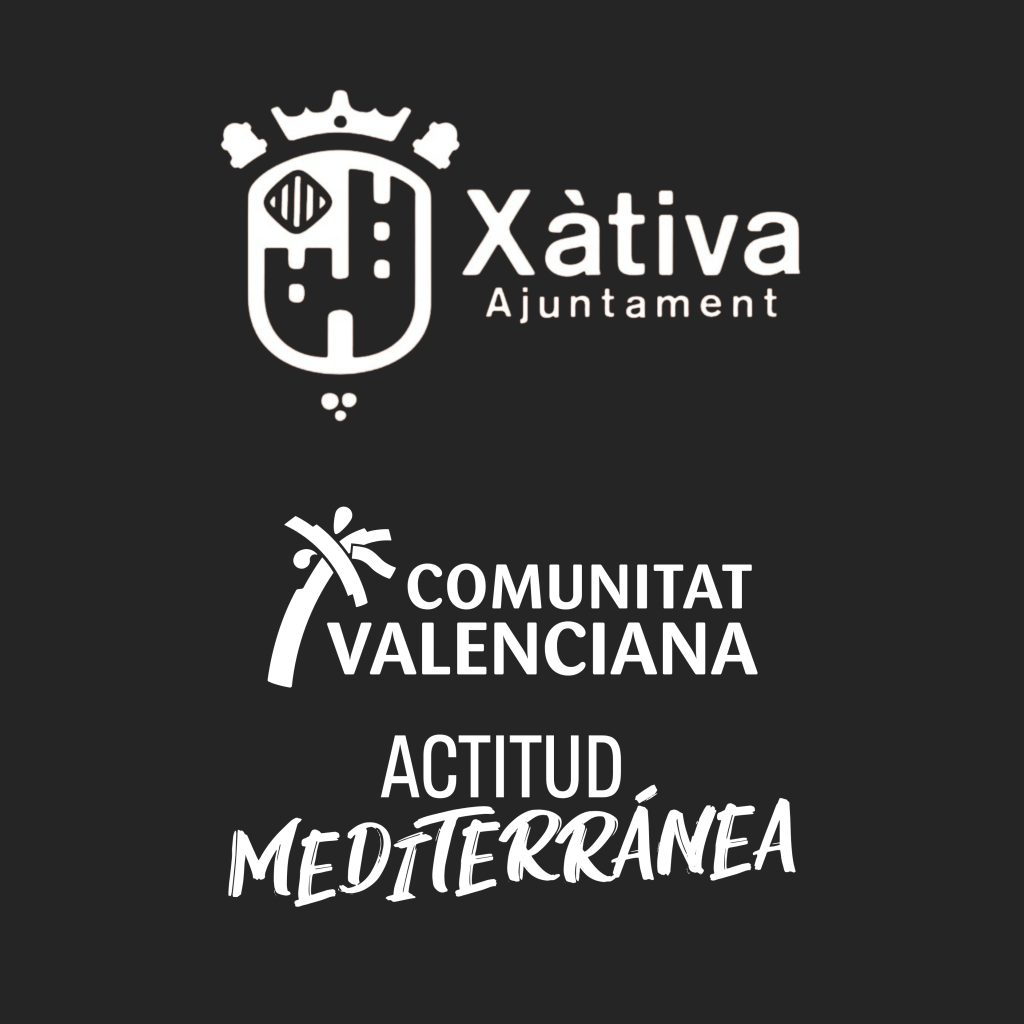THE ALMODÍ MUSEUM
The ancient wheat market
THE ALMODÍ MUSEUM
The ancient wheat market
The Museum
The Almodí Municipal Museum offers an unparalleled opportunity to journey back into Xàtiva’s past, from the first vestiges of the Palaeolithic to the times when the city formed part of the Al-Ándalus territories. It is housed in a historically important building of the same name. Constructed in the mid-16th century, it was once a wheat market, and still boasts the original Gothic façade as well as an outstanding Renaissance courtyard with Ionic columns. The museum also occupies the adjacent building, once the royal weights and measures office, but subsequently remodelled to accommodate the customs office and later the Bank of Spain. Today, the Almodí is a modern exhibition space focusing on archaeology and featuring reproductions of the first remains to be uncovered in the Cova Negra as well as Iberian, Roman, Visigothic and Islamic remains. The jewel in its crown though is undoubtedly an 11th century Islamic water trough.
The Museum
The Almodí Municipal Museum offers an unparalleled opportunity to journey back into Xàtiva’s past, from the first vestiges of the Palaeolithic to the times when the city formed part of the Al-Ándalus territories. It is housed in a historically important building of the same name. Constructed in the mid-16th century, it was once a wheat market, and still boasts the original Gothic façade as well as an outstanding Renaissance courtyard with Ionic columns. The museum also occupies the adjacent building, once the royal weights and measures office, but subsequently remodelled to accommodate the customs office and later the Bank of Spain. Today, the Almodí is a modern exhibition space focusing on archaeology and featuring reproductions of the first remains to be uncovered in the Cova Negra as well as Iberian, Roman, Visigothic and Islamic remains. The jewel in its crown though is undoubtedly an 11th century Islamic water trough.
THE PALAEOLITHIC IN THE COVA NEGRA
Reproduction of a Neanderthal parietal bone (part of the skull). The Neanderthals inhabited Europe during the Middle Palaeolithic Era and developed a rich material culture known as the Mousterian. The bone was unearthed during the first excavations to be carried out in the Cova Negra, in the first half of the 20th century.
IBERIAN HEAD
Legacy of the Iberian Saitabi, the sculpture dates back to the 4th century BC and was found in the course of works being carried out in city. With an aesthetic that denotes a Greek influence, it probably represents a man because despite wearing earrings there is no sign of traditionally feminine adornment.
ROMAN INSCRIPTIONS
The Roman town of Saetabis was an important staging post on the major Roman road known as the Via Augusta. A Roman colony mentioned in many texts, it had a mint and was famous for its fine linen fabrics. The Almodí houses an important collection of inscriptions from the period.
THE PALAEOLITHIC IN THE COVA NEGRA
Reproduction of a Neanderthal parietal bone (part of the skull). The Neanderthals inhabited Europe during the Middle Palaeolithic Era and developed a rich material culture known as the Mousterian. The bone was unearthed during the first excavations to be carried out in the Cova Negra, in the first half of the 20th century.
IBERIAN HEAD
Legacy of the Iberian Saitabi, the sculpture dates back to the 4th century BC and was found in the course of works being carried out in city. With an aesthetic that denotes a Greek influence, it probably represents a man because despite wearing earrings there is no sign of traditionally feminine adornment.
ROMAN INSCRIPTIONS
The Roman town of Saetabis was an important staging post on the major Roman road known as the Via Augusta. A Roman colony mentioned in many texts, it had a mint and was famous for its fine linen fabrics. The Almodí houses an important collection of inscriptions from the period.
Islamic splendour
The Islamic period is undoubtedly the best-represented stage in Xàtiva’s history in the museum. The city experienced a golden age under Muslim rule; the network of canals irrigating the city’s gardens and orchards was created at this time, Ibn Hazam wrote his renowned Andalusian treatise on love, The Ring of the Dove, and a paper industry considered to be the first in Europe was established. In addition to the 11th century drinking trough, the Almodí’s Islamic collection also includes arches from the public baths, a double arch from the Pinohermoso Palace and numerous representative pieces of pottery.
THE XÀTIVA ARAB BATHS
The arches are the sole preserved remains of the ancient public baths, located in the Muslim period within the city walls. The three horseshoe arches are supported by columns and pilasters of sandstone.
A WEALTH OF POTTERY
The museum holds pottery remains from practically all of the city’s historical periods, including Iberian, Roman, Muslim and regional rule and even industrial ceramic murals from the late 19th and early 20th centuries.
THE PALACE ROOM
The arches and coffered ceiling from what is known as the Pinohermoso Palace once adorned a sumptuous Islamic mansion. They date from the Almohad period and probably gave onto a private prayer room.
THE XÀTIVA ARAB BATHS
The arches are the sole preserved remains of the ancient public baths, located in the Muslim period within the city walls. The three horseshoe arches are supported by columns and pilasters of sandstone.
A WEALTH OF POTTERY
The museum holds pottery remains from practically all of the city’s historical periods, including Iberian, Roman, Muslim and regional rule and even industrial ceramic murals from the late 19th and early 20th centuries.
THE PALACE ROOM
The arches and coffered ceiling from what is known as the Pinohermoso Palace once adorned a sumptuous Islamic mansion. They date from the Almohad period and probably gave onto a private prayer room.
THE LAST MEDIAEVAL BUILDING
The museum occupies the old wheat market, the last mediaeval building to be erected in Xàtiva —it was completed in 1548— and the first in which the Renaissance language was employed.
FAÇADE OF THE ALMODÍ
The three royal shields of the Crown of Aragon denote the public nature of the Almodí, while the cartouche records the date of completion: 1548.
EL ÚLTIMO EDIFICIO MEDIEVAL
The museum occupies the old wheat market, the last mediaeval building to be erected in Xàtiva —it was completed in 1548— and the first in which the Renaissance language was employed.
FAÇADE OF THE ALMODÍ
The three royal shields of the Crown of Aragon denote the public nature of the Almodí, while the cartouche records the date of completion: 1548.
Information
THE ALMODÍ MUSEUM
No. 46, Carrer de la Corretgeria
Telephone: 962 27 65 97
From June 11 to September 8:
From Tuesday to Sunday, from 10:00 a.m. to 2:30 p.m.
Closed Monday
Tickets
Information
THE ALMODÍ MUSEUM
No. 46, Carrer de la Corretgeria
Telephone: 962 27 65 97
From June 11 to September 8:
From Tuesday to Sunday, from 10:00 a.m. to 2:30 p.m.
Closed Monday



